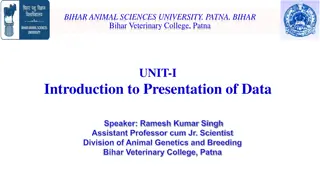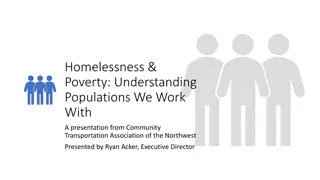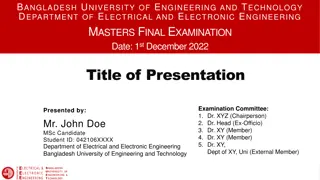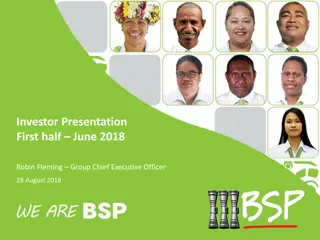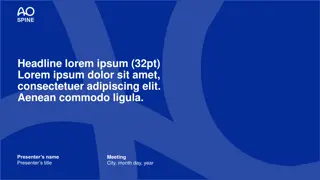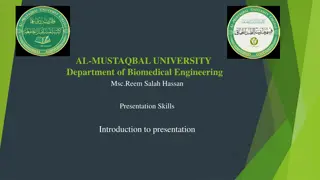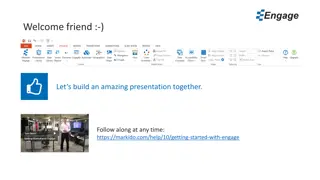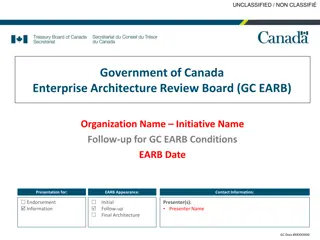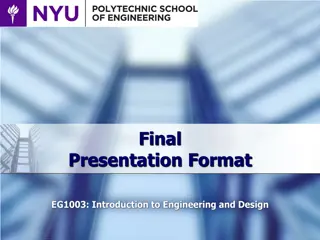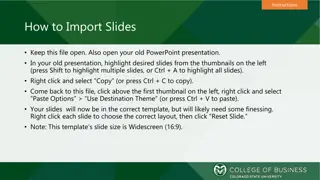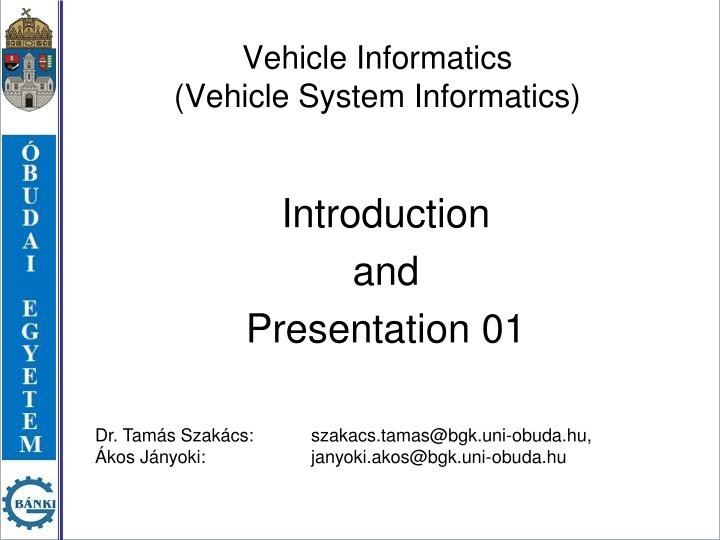
Introduction to Vehicle System Informatics: Key Concepts and Technologies
Explore the world of vehicle informatics and the specialized networks that interconnect components within vehicles, such as automobiles, buses, trains, ships, and aircraft. Learn about the importance of protocols like CAN and LIN, as well as the evolution of electronic modules in modern vehicles for enhanced control, performance, and efficiency.
Download Presentation

Please find below an Image/Link to download the presentation.
The content on the website is provided AS IS for your information and personal use only. It may not be sold, licensed, or shared on other websites without obtaining consent from the author. If you encounter any issues during the download, it is possible that the publisher has removed the file from their server.
You are allowed to download the files provided on this website for personal or commercial use, subject to the condition that they are used lawfully. All files are the property of their respective owners.
The content on the website is provided AS IS for your information and personal use only. It may not be sold, licensed, or shared on other websites without obtaining consent from the author.
E N D
Presentation Transcript
Vehicle Informatics (Vehicle System Informatics) Introduction and Presentation 01 Dr. Tam s Szak cs: kos J nyoki: szakacs.tamas@bgk.uni-obuda.hu, janyoki.akos@bgk.uni-obuda.hu
BUS systems JInfo_EA_kommunikacio-BME.pdf E-BGK MEI Vehicle Informatics Dr. Tam s Szak cs
BUS system A vehicle bus is a specialized internal communications network that interconnects components inside a vehicle (e.g. automobile, bus, train, industrial or agricultural vehicle, ship, or aircraft). Special requirements for vehicle control such as assurance of message delivery, of non-conflicting messages, of minimum time of delivery, of low cost, and of EMF noise resilience, as well as redundant routing and other characteristics mandate the use of less common networking protocols. Protocols include Controller Area Network (CAN), Local Interconnect Network (LIN) and others. Conventional computer networking technologies (such as Ethernet and TCP/IP) are rarely used, except in aircraft, where implementations of the ARINC 664 such as the Avionics Full-Duplex Switched Ethernet are used. Aircraft that use AFDX include the B787, the A400M and the A380. https://en.wikipedia.org/wiki/Vehicle_bus E-BGK MEI Vehicle Informatics Dr. Tam s Szak cs
BUS systems background The main driving forces for the development of vehicle network technology have been the advances made in the electronics industry in general and government regulations imposed, in order to make the automobiles environmentally friendly. With stringent emission standards for automobiles, it became impossible to attain the required degree of control without the help of on- board computing devices. On-board electronic devices have also contributed substantially to vehicle performance, occupant comfort, ease of manufacture and cost effectiveness. At one time, a car radio was likely the only electronic device in an automobile, but now almost every component of the vehicle has some electronic feature. Typical electronic modules on today's vehicles include the: Engine Control Unit (ECU) Transmission Control Unit (TCU) Anti-lock Braking System (ABS) Body Control Modules (BCM). https://en.wikipedia.org/wiki/Vehicle_bus E-BGK MEI Vehicle Informatics Dr. Tam s Szak cs
BUS systems background An electronic control module typically gets its input from sensors (speed, temperature, pressure, etc.) that it uses in its computation. Various actuators are used to enforce the actions determined by the module (turn the cooling fan on, change gear, etc.). The modules need to exchange data among themselves during the normal operation of the vehicle. For example, the engine needs to tell the transmission what the engine speed is, and the transmission needs to tell other modules when a gear shift occurs. This need to exchange data quickly and reliably led to the development of the vehicle network, as the medium of data exchange. The automotive industry quickly realized the complexity of wiring each module to every other module. Such a wiring design would not only be complex, it would have to be altered depending on which modules were included in the specific vehicle. For example, a car without the anti-lock brake module would have to be wired differently than one that included anti-lock brakes. https://en.wikipedia.org/wiki/Vehicle_bus E-BGK MEI Vehicle Informatics Dr. Tam s Szak cs
BUS systems background The industry's answer to this problem was to create a central network in the vehicle. Modules could be 'plugged' into the network and would be able to communicate with any other module that was installed on the network. This design was easier to manufacture, easier to maintain and provided the flexibility to add and remove options without affecting the entire vehicle's wiring architecture. Each module, a node on the vehicle network, controls specific components related to its function and communicates with the other modules as necessary, using a standard protocol, over the vehicle network. Networks were not new, but their application to the vehicle was. The networks for the vehicles called for: Low cost Immunity from external noise Ability to operate in harsh environments Overall robustness and reliability https://en.wikipedia.org/wiki/Vehicle_bus E-BGK MEI Vehicle Informatics Dr. Tam s Szak cs
BUS systems classification The applications for network protocols in vehicles can be separated in four distinct areas. There is no single protocol, which could claim to represent a one fits all solution for all these areas. Each of them requires specific protocol features: Multimedia applications, calling for protocols providing high speed, high bandwidth, and even wireless interconnection, like MOST, D2B, or Bluetooth; Emerging safety critical applications in chassis and power train (x- by wire) calling for a fault tolerant, dependable protocol, like TTP/C, Byteflight, TT-CAN or others; Conventional body and powertrain applications, mainly using CAN; Mechatronic type applications such as smart sensors and actuator, or even complex ECUs with simple communications needs, being addressed by low-end protocols like LIN, TTP/A, J-1850, and quite a few other OEM or Tier-I in-house protocols. w_specks_lin_baden-baden_paper[1].pdf E-BGK MEI Vehicle Informatics Dr. Tam s Szak cs
BUS systems classification JInfo_EA_kommunikacio-BME.pdf E-BGK MEI Vehicle Informatics Dr. Tam s Szak cs
Real-Time Control Systems Time-triggered control system All activities are carried out at certain points in time know a priori All nodes have a common notion of time, based on approximately synchronization Event-triggered control system All activities are carried out in response to relevant events external to the system E-BGK MEI Vehicle Informatics Dr. Tam s Szak cs
BUS systems classification JInfo_EA_kommunikacio-BME.pdf E-BGK MEI Vehicle Informatics Dr. Tam s Szak cs
BUS systems classification w_specks_lin_baden-baden_paper[1].pdf E-BGK MEI Vehicle Informatics Dr. Tam s Szak cs
BUS systems classification BUS systems Inner Outer (industrial) Control Bus Address Bus Data Bus Industrial Ethernet .. PROFI Bus Field Bus CAN Bus Inter Bus ASI Bus Mod Bus E-BGK MEI Vehicle Informatics Dr. Tam s Szak cs
BUS systems classification JInfo_EA_kommunikacio-BME.pdf E-BGK MEI Vehicle Informatics Dr. Tam s Szak cs
BUS systems classification JInfo_EA_kommunikacio-BME.pdf E-BGK MEI Vehicle Informatics Dr. Tam s Szak cs
Main Network Topologies Central control Relatively simple, but in case of Central fail, the network is failed, too Star Bus-access control Hierarchical (segmented) bus-systems Bus Directional data flow (data to head of tree) Building s networks - EIB Tree TOKEN passing method Example: INTERBUS Ring several combinations E-BGK MEI Vehicle Informatics Dr. Tam s Szak cs
Communication transfer medium Radio vawe: WiFi, BlueTooth, GSM, GPRS Physical Cable system: Paired wire (ASI Bus) Coax cable (Industrial Ethernet) Optic cable (Ethernet) E-BGK MEI Vehicle Informatics Dr. Tam s Szak cs
Data Transfer Control Methods Access control is a way of limiting access to a system (BUSes) or to physical or virtual resources. In computing, access control is a process by which users (PROCESSORs) are granted access and certain privileges to systems (BUSes), resources or information. In access control systems, users must present credentials (TOKEN) before they can be granted access. In physical systems, these credentials may come in many forms, see later. Since a serial communication system such as CAN is based on a two- wire connection between nodes in the network, i.e. all nodes are sharing the same physical communication bus, a method of message/data collision avoidance is mandatory to assure a safe data transfer and to avoid delays resulting from the necessary restoration of proper bus conditions after the collision. E-BGK MEI Vehicle Informatics Dr. Tam s Szak cs
Bus Access Methods A collision may occur when two or more nodes in the network are attempting to access the bus at virtually the same time, which may result in unwelcome effects, such as bus access delays or even destruction/damage of messages. There are various methods of collision avoidance between the various fieldbus systems and in most cases the collision avoidance is actually a collision repair , which requires an unspecified bus recovery time, therefore taking up valuable bandwidth, and usually results in the destruction of the message. Random access: - The workstation (WS) is randomly checking the BUS state, and if the BUS is not busy can initiate the transmit. (CSMA/CD) Distributed access: Just one workstation has the ability to transmit. This ability is passed (after the determined time-period) from WS to WS (CSMA/CA) Centralized access: a central station controlling the BUS accesses. The other WSs listening for permit to transfer. (TDMA, Master-Slave) E-BGK MEI Vehicle Informatics Dr. Tam s Szak cs
BUS systems classification JInfo_EA_kommunikacio-BME.pdf E-BGK MEI Vehicle Informatics Dr. Tam s Szak cs
BUS systems classification JInfo_EA_kommunikacio-BME.pdf E-BGK MEI Vehicle Informatics Dr. Tam s Szak cs
ISO/OSI 7 layers model The Open Systems Interconnection model (OSI model) is a conceptual model that characterizes and standardizes the communication functions of a telecommunication or computing system without regard to their underlying internal structure and technology. Its goal is the interoperability of diverse communication systems with standard protocols. The model partitions a communication system into abstraction layers. The original version of the model defined seven layers. E-BGK MEI Vehicle Informatics Dr. Tam s Szak cs




